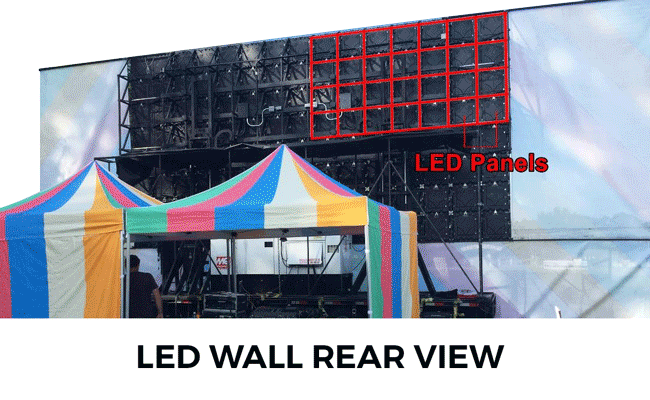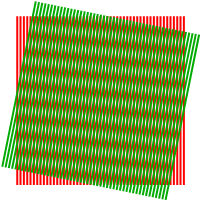LED Academy
We put together this guide to help you learn more about the new, exciting LED technology.
What is an LED Display?
A flat panel display known as an LED display uses an array of LEDs as its light source. In contrast, LCD displays employ cold cathode fluorescent lights as their backlighting, which are less effective. Due to LED’s efficiency, it is now much more common in both video walls and normal flat-screen TVs.
LED Display Capabilities
LED displays are excellent for both indoor and outdoor applications because of their incredibly bright screens. They are extremely vivid at night or in the dark and may be seen well in direct sunshine. Outdoor screens typically function rain or shine and are waterproof.

What is an LED Video Wall?
A collection of various displays connected in order to create a single show is known as an LED video wall. It is common for special indoor and outdoor events that call for enormous screens or specialized aspect ratios/shapes to use individual video panels or tiles because they may be connected smoothly to achieve endless sizes and shapes.
Basic Types of LED Walls
Outdoor LED
An LED video wall is a collection of different displays that are connected to produce a single show. Individual video panels or tiles are frequently used for special indoor and outdoor events that call for gigantic screens or specialized aspect ratios/designs because they may be linked effortlessly to reach unlimited sizes and shapes.
Indoor LED
Due to the closer viewing distances, indoor LED video panels often offer greater resolutions and are ideal for trade exhibits, religious events, press conferences, long-term LED installations, and more.
Mobile LED
LED video display panels are used to create mobile video walls, which are permanently mounted to a truck. As a result of the shorter setup time and generally lower labor costs, renting becomes more affordable.
Modular LED
Trussing and rigging are used on-site to build modular LED walls. For events that demand a certain video size, aspect ratio, or aesthetic, modular LED is popular.
Understanding Image Resolution
The level of detail that a picture or video contains is referred to as resolution. The smallest addressable element of a display image is called a pixel, which is also referred to as a “dot” sometimes. To create a single image or video frame, thousands, sometimes millions, of pixels must come together. The more pixels an image or video possesses, the sharper/clearer the image is and the more detail is presented. The pixel count is the most often used metric for determining image resolution. For instance, the resolution of 1080p HD is 1920 by 1080 pixels.
“Pixel pitch” or “dot pitch” is yet another helpful unit of measurement for image resolution, particularly with LED video walls. The distance in millimeters between the centers of one pixel and the pixel next to it is known as the “pixel pitch.” The pixel density increases with decreasing distance, which results in a greater image resolution in a given amount of space. The pixel pitch of that screen would be 4.8 mm, or p4.8, for instance, if the pixels were spaced 4.8 mm apart.
Aspect ratio is a crucial statistic for determining image resolution. The ratio of pixel width to pixel height, represented as pixel width: pixel height, is known as an image aspect ratio. A 1920x1080p monitor, for instance, has a 1920:1080 aspect ratio. However, we’d like to make 1920:1080 simpler, so a 1920x1080p display has a 16:9 aspect ratio. The prevalent aspect ratio for displays today is 16:9. This article will teach you all there is to know about aspect ratios and video walls.

Pixel Pitch Viewing Distance
In relation to the viewing distance of an LED video wall, pixel pitch is a crucial factor to take into account. In order for a video board with a high pixel pitch (low relative resolution) to seem clear, the viewer must be far away from the screen. Due to the long viewing distance, high pitch screens, such 20 to 30mm, are frequent with billboards. On the other hand, a low or “tight” pitch image will appear crisper up close. That is why a tight pitch is often preferred for indoor competitions.

LED Brightness
When utilizing LED, it is critical to consider the brightness level. It won’t be seen if it isn’t bright enough in the sunlight, and viewers’ eyes may become tired if it is too bright at night. The brightness of an LED is measured in nits. Here is a general formula for figuring out nit specifications:
- Indoor Brightness: 1,000 – 1,500 nits
- Outdoor Brightness: 2,000 – 3,000 nits
- Outdoor Brightness Under Direct Sunlight: LED panels may need to output as much as 5,000+ nits
Power is a crucial factor to bear in mind when thinking about brightness. The amount of electricity needed for each LED screen to operate at its maximum brightness varies. For instance, each 5 of our 6mm outdoor SMD LED panels needs its own 20 amp breaker. Therefore, nine 20 amp breakers would be needed to supply power to a video wall that is nine panels wide by five panels high.

SMD LED

DIP LED
SMD vs. DIP LED
Power is an important consideration when considering brightness. Each LED screen uses a different amount of electricity to run at maximum brightness. For instance, each of our 6mm outdoor SMD LED panels that are 5mm thick requires a separate 20 amp breaker. In order to power a video wall that is nine panels wide by five panels high, nine 20 amp breakers would be required.

The Moire Pattern
When photographing or filming an LED display, the moire pattern effect occurs, which presents a significant obstacle. Any expert in the event technology business who wants to take pictures or record videos of an LED display must know how to deal with the ensuing patterns and colors, which can all but spoil the image. When the pixel structure of an LED panel clashes with the pixel structure of a photo/video device, a moire pattern results. An LED screen has a lower pixel density and larger pixel size than your camera, which requires a high resolution for a range of applications, as it must be visible from a distance.
What Does IP Rating Mean for LED Displays?
An electronic device’s ability to withstand damaging exterior factors, such as an LED display, is gauged by its ingress protection (IP) rating. The IP rating offers a uniform approach to evaluate the effectiveness of a seal on a piece of electrical equipment. For instance, an LED display screen with an IP rating close to IP65 is required if you wish to conduct an outdoor event where there may be rain or dust. This will ensure that the LED display screen keeps powered on.
The ingress protection against solid items, such as dust and dirt, is represented by the first digit of a two-digit number with the prefix “IP,” and the ingress protection against liquid objects, such as rain or melting snow, is represented by the second digit. Protection from solids, the first digit, goes from 0 to 7, with 0 denoting no protection and 7 denoting complete dust tightness. The second digit (moisture protection) is a number between 0 and 9, with 0 denoting no protection and 9 denoting protection from complete and protracted submersion in water. Rent an LED display with the appropriate IP certification for your particular applications for the finest viewing experience, whether indoors or out. To learn more about how IP ratings enhance the viewing experience for viewers, click the link below.

